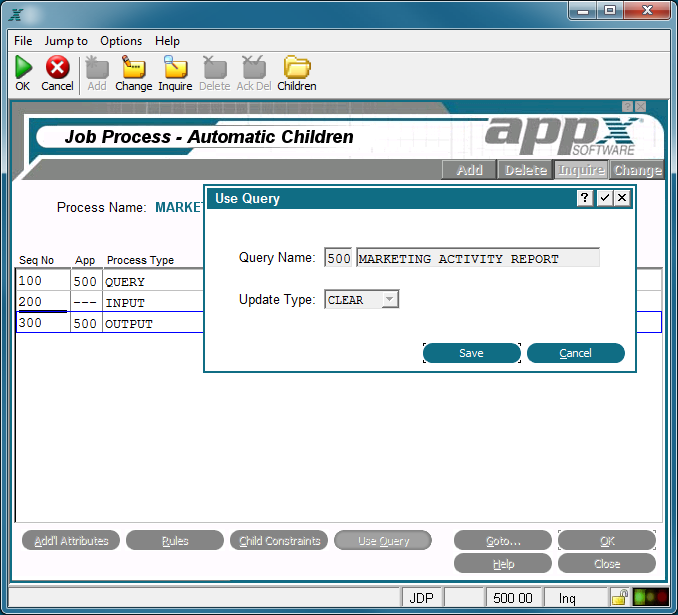Chapter 3-14: Automatic and Optional Children |
Child Use Query Option For automatic child processes, the Use Query option identifies a specific query process by Application and Process Name that determines the records available to this child process. This specification affects input, output, and update processes. The Query Name on the Use Query option screen will default to the prior query entered in the job stream. If the name of the query is changed you must change this entry on the Use Query specification to match if that is your intention. The child Use Query overlay is shown below.
Child Use Query Overlay The child Use Query overlay contains the following fields. Query Name. The PCF of the query that is identified by this specification must match the PCF of the child process. Update Type determines the disposition of any existing pointer file for the query process to be used. The query Update Type options are: 1 - NORMAL. Generate the pointer file if it does not yet exist. If the pointer file exists, use it without re-executing the query. 2 - CLEAR. Discard any existing pointer file and generate a new one. 3 - CASCADE. Apply any new constraints to further restrict the contents of an existing pointer file. Note that if the new constraints are less restrictive than the constraints that were used to generate the existing pointer file, the CASCADE option will not add records to the pointer file. In such a case, you should use the CLEAR option. Also, if you intend to reuse an existing pointer file and yet repeat the query setup, be sure that you specify CHANGE as the Override Default Mode in the Additional Attributes for the second query. The default is 2 (CLEAR). |
Application Design Manual "Powered by Appx Software"1125 ©2006 By APPX Software, Inc. All Rights Reserved |
